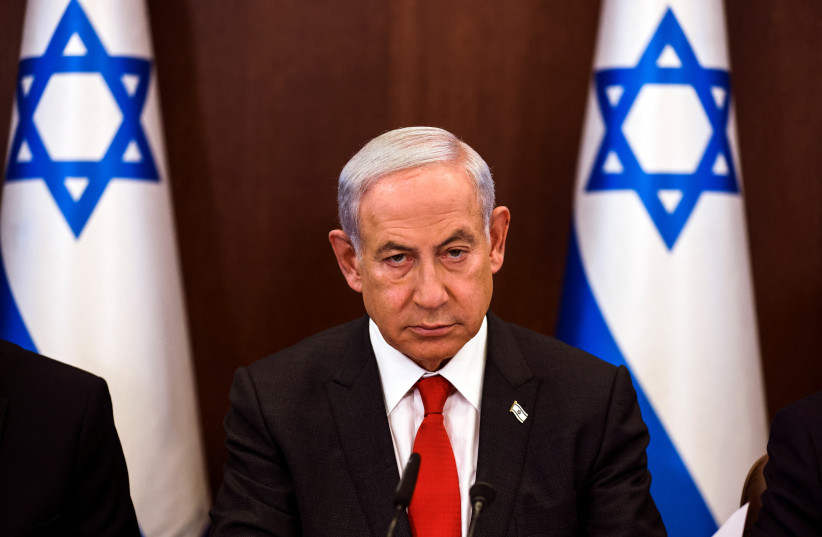Having split Solomon’s kingdom of peace and prosperity into the rival kingdoms of Judah and Israel, our forebears soon faced schism’s grim result, as Egypt invaded Judah, entered Jerusalem, “and carried off the treasures of the House of God” (I Kings 14:25-26).
The procession from national rift to foreign invasion was a recurring theme in ancient Israel’s history, and its results were catastrophic. The following century, after the breakup of an alliance between Judah and Israel, the kingdom of Aram “harassed… throughout the territory of Israel” (II Kings 10:32).
The Assyrian invasion that destroyed and divided Israel’s northern half was also preceded by a civil war in which Israel’s King Pekah trounced Judah’s King Ahaz.
The same pattern returned during the Roman era. When the Romans first arrived at Jerusalem’s gates, the Jews fought a civil war, the one between the brothers John Hyrcanus and Judah Aristobulus. That was in 63 BCE. Finally, in 70 CE, multiple militias were fighting each other inside the walls of Jerusalem even after the Romans began marching from Caesarea to Mount Scopus.


The October 7 massacre and Israeli division
What, then, was the relationship between Hamas’s invasion last fall and the rift that divided Israel while it approached?
Technically, this chilling question will not be answered before documents of Hamas’s deliberations, if there are any, emerge. That’s about their leaders and their invasion. As for our leaders and the rift they oversaw, one fact is clear already now: the rift did not happen here haphazardly. It was a matter of policy, strategy, and aim.
BENJAMIN Netanyahu began fracturing Israeli society in the 1990s, when he charged that “some on the Left forgot what being Jewish means.” Still, the early Netanyahu kept eye contact with the political Center. That’s how his first coalition included Avigdor Kahalani’s Third Way Party, his second deployed Ehud Barak’s Labor, and his third government harnessed Yair Lapid’s Yesh Atid and Tzipi Livni’s Hatnua.
In 2014, the pattern broke when Netanyahu abruptly fired his centrist partners and dispersed the Knesset, even though that legislature was not even two years old, and his Center-Right government was working well on all fronts.
The untold reason for this shot from the hip was obvious: Netanyahu didn’t want the political Center. He wanted the fringes, what he called Likud’s “natural partners,” meaning ultra-Orthodoxy and the parties to Likud’s right.
It was a convenient venue. A strategic alliance with cynics who don’t interfere in Netanyahu’s management of budgetary, military, and foreign affairs provided that their ghettos receive taxpayer money, and their boys don’t go to the army.
December 2014, then, was the Netanyahu-era’s watershed. Over the following years, Israel lost its political stability, having held in less than a decade five general elections, and changed six defense ministers, six finance ministers, and seven foreign ministers.
Meanwhile, Netanyahu incited the public against the courts, the police, the prosecution, and the media, ultimately attempting to seize control of the judiciary and thus not only ignore the Center, but subdue it, by imposing his narrow majority on the elites, the middle classes, and the political mainstream.
The question now is not where all this led – everyone remembers last year’s mayhem in the streets – but how October 7 changed the man at the center of this epochal tragedy. Sadly, the answer is that Benjamin Netanyahu has learned nothing and forgotten nothing.
THE OCTOBER massacre transformed Israel. The same Israelis who were previously pitted against each other are now kind to each other, seeking not what divides them but what makes them one.Netanyahu, who turns 75 this fall, is too old to change. An embarrassing display of his unchanged divisiveness emerged in a press conference last week, when Yuval Sadeh, a reporter from business daily Calcalist, told Netanyahu that he had just returned from 100 days of fighting in Gaza, and then asked why the government is funding ultra-Orthodox organizations that encourage draft dodging.
A reconstructed Netanyahu would have first saluted the man’s sacrificial service and then explained politely his political constraints. But Netanyahu is not reconstructed, and so he scolded the warrior, saying that while he, Netanyahu, “focuses on liquidating Hamas, you” – meaning the press, including the man who just risked his life fighting Hamas – “conduct the war on me.”
The reservist’s question was of course not “unfair,” as Netanyahu claimed, and is in fact urgent.
At a time that demands unity, why is the government sectarian? Why does Netanyahu have a sectarian finance minister who refuses to halt sectarian budgeting even as defense spending soars? Why does Netanyahu waltz with a national security minister who attacks the president of the United States, Israel’s chief political defender and arms supplier?
Like an alcoholic unable to part with his bottle, Netanyahu refuses to heed a traumatized, mourning, and seething Israeli majority’s expectation that he replace his collection of fanatics and draft dodgers with a real alliance of real patriots.
Whether or not he realizes this, Netanyahu’s career is in its twilight. No matter what happens from here to his departure, Hamas’s invasion will dominate his historic record, and punctuate it. The original sin, his biographers will note, came when Netanyahu divorced the political Center, in his thirst for absolute power and impatience for healthy debate.
That damning record can still be tempered if Netanyahu will make a grand gesture of national reconciliation. Sadly, the chances of this happening are less than low.
The way he is working, Netanyahu will soon lose even the centrist fig leaf the war made him wear – meaning Benny Gantz and his 12 lawmakers, and possibly also Yoav Gallant, the umpteenth defense minister with whom Netanyahu is failing to get along.
Like the masterminds of ancient Israel’s disastrous rifts, Netanyahu just doesn’t get it: When torn, Israel provokes its enemies’ attack, and cooks its own defeat.
The writer, a Hartman Institute fellow, is the author of the bestselling Mitzad Ha’ivelet Ha’yehudi (The Jewish March of Folly, Yediot Sefarim, 2019), a revisionist history of the Jewish people’s political leadership.
